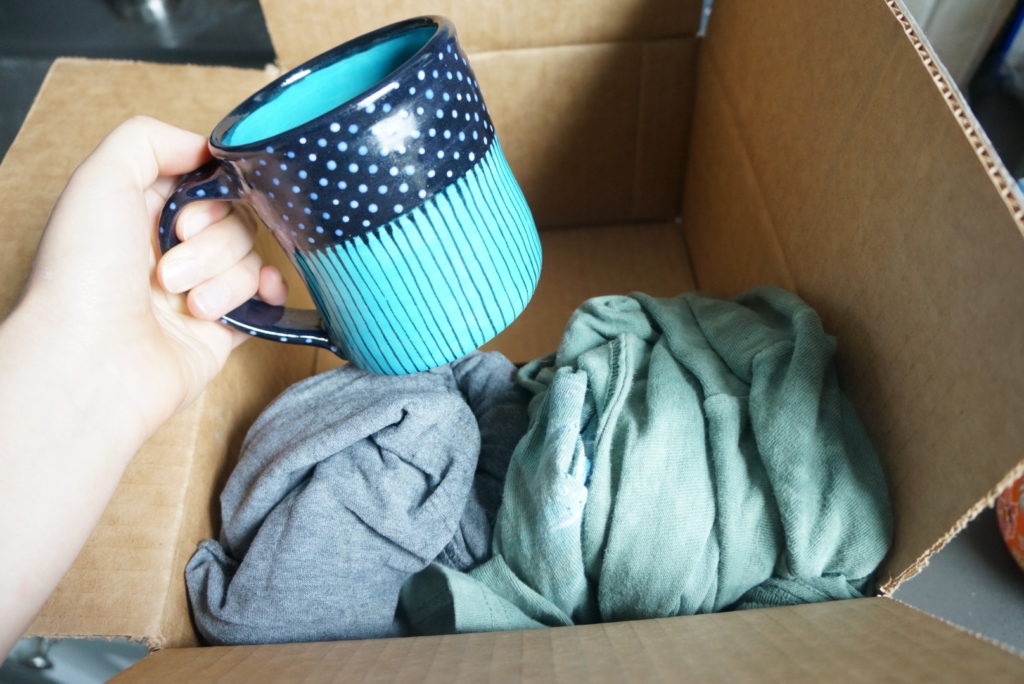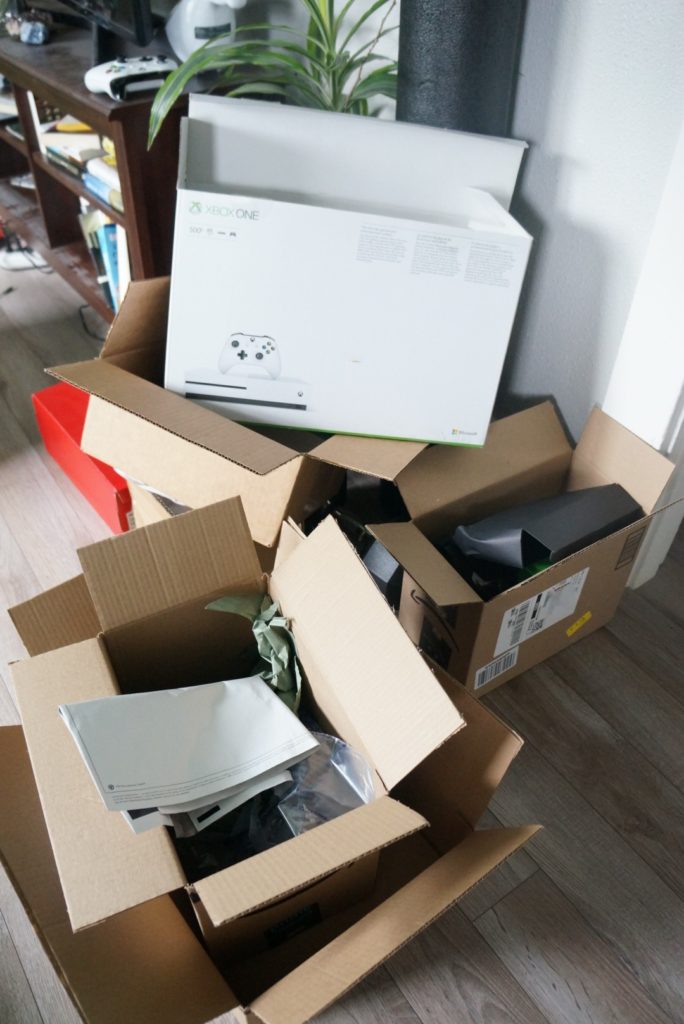Moving is inherently stressful. There’s packing, cleaning, hauling boxes/furniture, sweating, swearing, and possibly arguing (if you’re moving with a friend or romantic partner). Whether you’re lugging your couch up several flights of stairs or paying someone else to do it, moving is expensive in both time and money. So given all those stressors, a low-waste move might be at the bottom of our “moving priority list.” But let me tell you from first-hand experience, there are eco-friendly options that not only create less waste, but can make your move less stressful too.
I recently moved to a new apartment with my partner. We researched ways to make our move more sustainable and were actually quite successful. Whether you’re moving 10 minutes or 1,000 miles away, try these eco-friendly moving tips to make your move more efficient (for you and the environment)!
Declutter and Donate

A great first step in the moving process is to remove, donate, and recycle the items we don’t use anymore. When there’s less to pack, we don’t need to consume as many boxes or packaging. Not to mention, we save our bodies from having to haul around boxes of unnecessary items. Donate to your local Goodwill, Salvation Army, or Thrift Store and recycle as much as possible (cut to me kneeling over the bathtub washing out the tenth glass bottle once filled with some beauty product).
Decluttering helped me understand more about the waste I produce. It’s one thing to discard empty packaging on an occasional basis, but it’s another to discard many accumulated products all at once. Seeing the mass of waste I produced really hit home how much of what I consume is wasted or unrecyclable. The declutter and donate process during this move inspired me to improve my consuming habits for the sake of the environment. I’m slowly building towards a low-waste, minimalist lifestyle, but I definitely got a big kick in the behind to speed it up a bit!
Renting Re-usable boxes

Hands down my favorite tip and one I will recommend to everyone I know. There are different companies nationwide that rent re-usable moving boxes. They deliver the boxes to your current place and then come and pick them up from your new place once you’ve moved in. They also sanitize the boxes between uses, which is crucial in the era of COVID-19.
Traditionally used moving boxes are made of cardboard and require lots of tape to secure the tops. They don’t tend to last long and are typically discarded after a single use. Cardboard boxes are also flimsy, harder to carry and stack, and require more time to assemble and seal.
Reusable boxes are sturdy, have built-in lids, and are easy to stack and carry due to the strategic box designs. We used cardboard boxes in previous moves, and found the reusable boxes way more effective as we could stack and carry them much easier. They are also sturdier which can protect the items inside.
We used a moving box rental service called Frogbox (I’m in no way affiliated with this company). We rented 30 boxes from them (25 large and 5 small). Which cost us about $124 for the week we rented them (in May 2020 and excluding sales tax). Find a re-usable box rental company near you that’s able to deliver and pickup at your location.
Are they more expensive than cardboard boxes?
I tried to run a cost comparison between renting reusable boxes vs. single-use cardboard boxes. There were some calculation difficulties due to varied prices depending on the package bought, but I decided to compare with Home Depot prices as it’s likely an economical and popular place for buying moving materials. All of the calculations below exclude tax.
Renting re-usable boxes from Frogbox: $124 for 1 week of approx. 91.45 cubic feet of box space ($1.35 per cubic foot)
- 25 large (24″ X 20″ X 12″) and 5 small (21″ x 15″ x 9″) moving boxes
- 30 boxes total
- Delivery + pickup included
Home Depot: $87.15 for approx. 111.1 cubic feet of box space ($0.78 per cubic foot)
- 15 large (18″ x 18″ x 24″) boxes, 10 medium (22″ x 16″ x 15″ boxes, and 10 small (16″ x 12″ x 12″) boxes
- 35 boxes total
- Includes bubble wrap, tape, packing paper etc.
- Shipping not included
So yes, renting re-usable boxes is more expensive. However, the convenience, ease of use, and reduced waste may justify a higher price tag for some.
Trying to save money?
Depending on your disposable income, $124 can feel like too much money to spend. You can still cut back on waste by asking your friends, neighbors, grocery stores and retailers for leftover boxes that you can repurpose for your move. You can also utilize suitcases, totes, and other bags to pack your belongings into. If you decide to use cardboard, look into using paper tape, which can be recycled.
Low-waste packing material

Instead of using bubble wrap or new paper packaging, we wrapped fragile items in clothes to protect them during the move. See image above for my 2-1 shirt and mug packing!
Preventing your belongings from breaking also contributes to a low-waste move because broken items cannot be used/donated and will likely end up in a landfill. Breakage is no good for anyone, so err on the side of caution!
In the hopes of preventing other breakage, we transported plants and other fragile items like mirrors in my car separately. This may not be an option for those moving longer distances, but you could consider selling or donating your items to people who would enjoy them instead of bringing them to your new home.
In the time leading up to your move, keep any packing material you may receive from previous deliveries to reuse for the move (i.e. padded envelopes and cardboard boxes). The below image shows all the packaging material we saved! We also re-used junk mail, newspapers, and magazines to wrap some items. If you don’t have any re-usable packing material available, ask your friends and family if they have any leftover.

Reflecting on my Low-Waste Move
My recent move inspired me to consume less, be more intentional about what I buy, and research eco-friendly alternatives for any life-event (there always seem to be more options than expected)!
What low-waste move ideas did I miss?
Also by Lindsay: Are You Conflict-Averse? How To Speak Up About Issues You Care About With Gentle Activism
Recharge & Optimize With These Electrolytes For Plant-Based Athletes
Get more like this—Sign up for our daily inspirational newsletter for exclusive content!
__
Photo: Lindsay Brave




